Hasselblad XCD 75mm f/3.4 P Review: Portable, Pleasing Portraits
Hasselblad is a name that screams premium optics at a premium price. However, Hasselblad recently developed a line of more compact and somewhat more affordable lenses categorized under the “P” for portable moniker.
At $2,300, I wouldn’t call the new 75mm lens a bargain or anything but it does save you some money compared to the faster Hasselblad lenses. I got the latest 75mm f/3.4 P series lens from Hasselblad to test out on the streets of Calgary.

Hasselblad XCD 75mm f/3.4 P Review: How it Feels
The new 75mm lens is coincidentally 75mm in physical length and does represent its portable namesake well with a very compact body design and a minimalist 14-ounce (398 gram) weight. The front of the lens is cut for 72mm filters and comes with a classic Hasselblad metal hood. There are no controls on the lens save for a manual focusing ring and it does not have the manual focus clutch that we would get on the higher end lenses. The manual focusing is by wire but at least the action is smooth and with practice even precise focusing is possible.
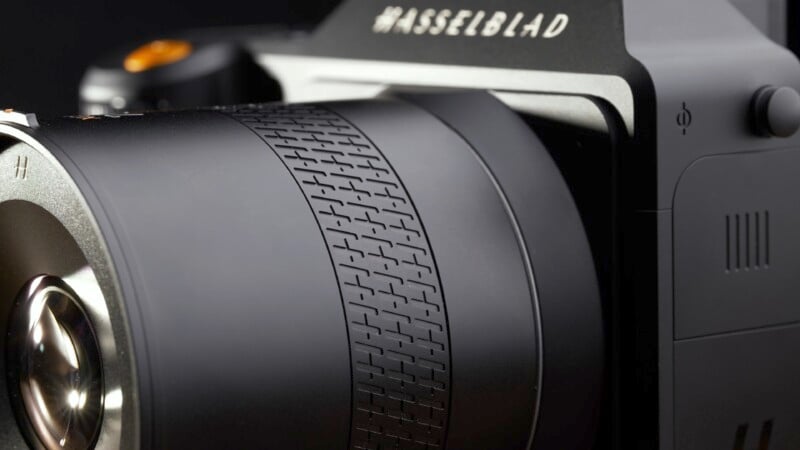

Even though the P series lenses are slower because they sport lower prices, they are still built to the same construction standards that all XCD lenses are and therefore feel fantastic to use with a fully weather-sealed design to protect them. There is honestly not much else to say about the handling on a lens that is made with such a minimalistic design.
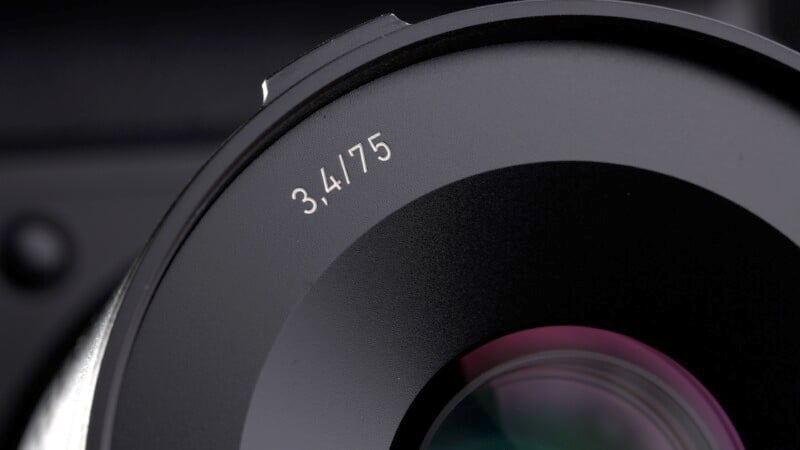
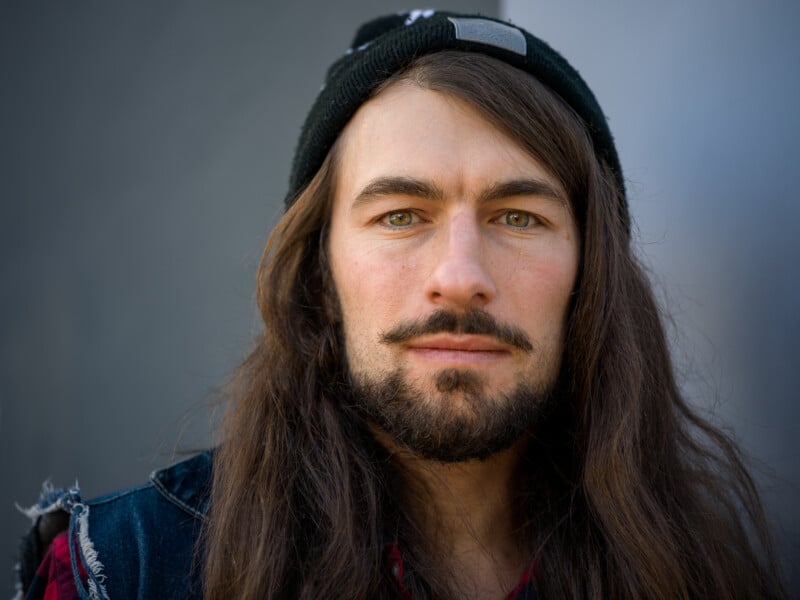
Hasselblad XCD 75mm f/3.4 P Review: How it Shoots
The 75mm focal length gives us a roughly 60mm full-frame equivalent which does make for a nice street photo lens. Hasselblad wants to market this as a portrait lens too which is an opinion I don’t really agree with. However, it is fine for head and shoulder portraits, maybe with a little cropping, and ideal as more of a full-body portrait lens too.

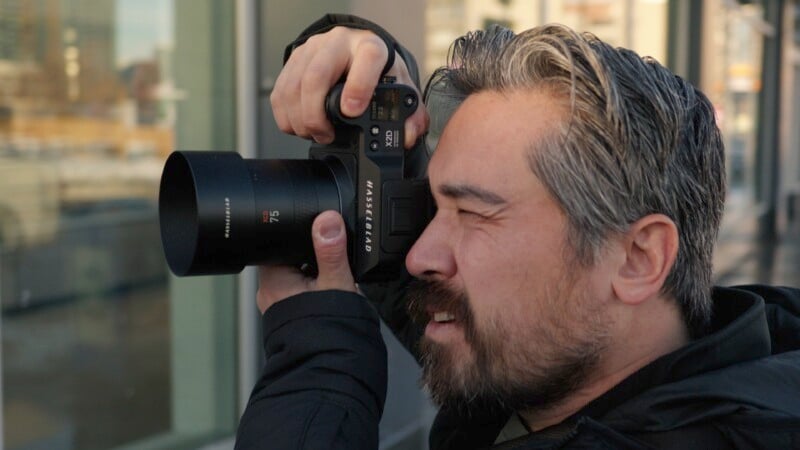
The f/3.4 aperture is one of the main reasons why this lens is more compact and more affordable. It gives the equivalent of an f/2.8 lens on a full-frame camera so it doesn’t exactly qualify as a lens with a particularly shallow depth of field, but you can get some soft backgrounds. The bokeh was okay with some very minor onion rings in the highlights which gives an almost messy look to the highlights as opposed to clear concentric rings inside. There is a fairly strong soap-bubble effect as well. This makes backgrounds look a little harsh but it was a mild effect and overall I found the look generally pleasing.


There is a dramatic cat’s eye effect when shooting at f/2.8 which I happen to like very much. The lens also is free of LoCA (longitudinal chromatic aberration) and very well corrected against flare and ghosting. There is a fair amount of vignetting, though, at f/3.4, which makes sense considering that the lens is designed to be as small as possible.

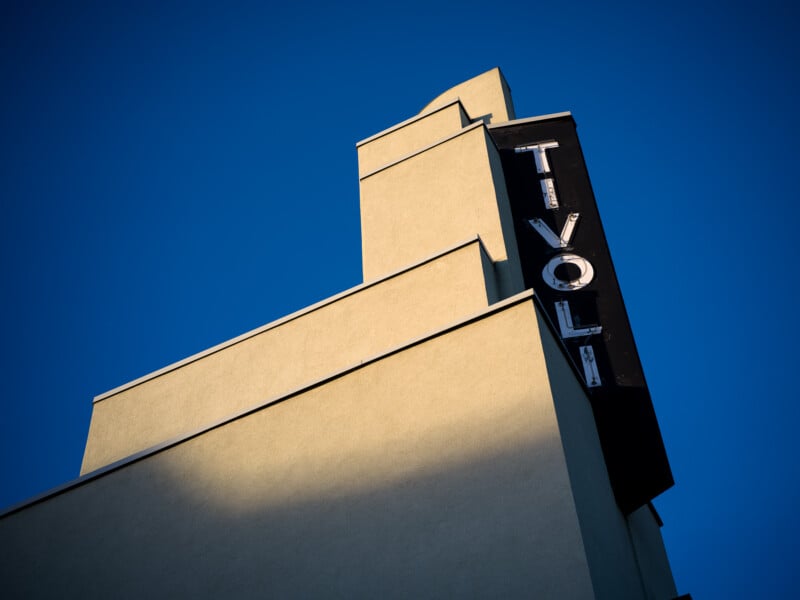
Sharpness is excellent throughout the image with this latest Hasselblad lens. The center of the image is full of detail at f/3.4 and doesn’t really need to get any better as you stop the lens down. The corners do show a touch of softness wide open but sharpen up really nicely, really quickly, as the lens is stopped down. This 75mm lens will please any photographer with its overall sharpness and easily manages the 100-megapixel resolution on the latest Hasselblad bodies.
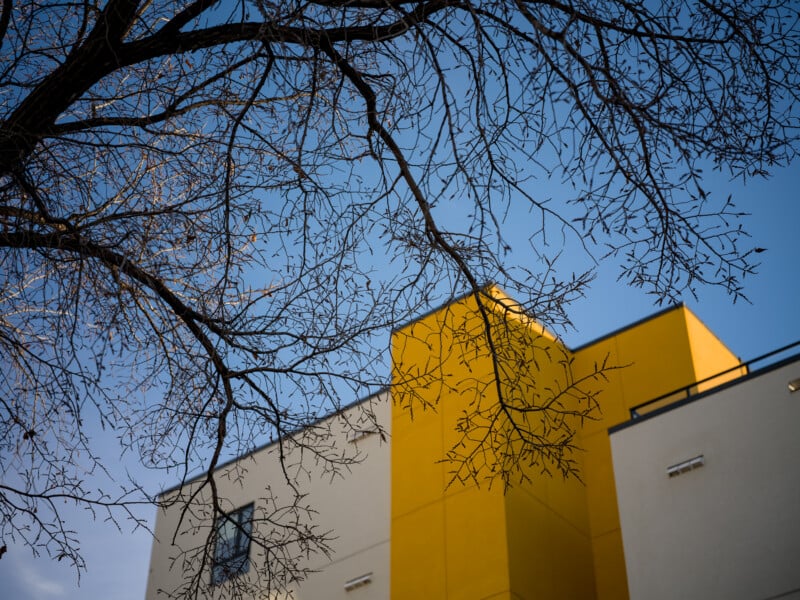
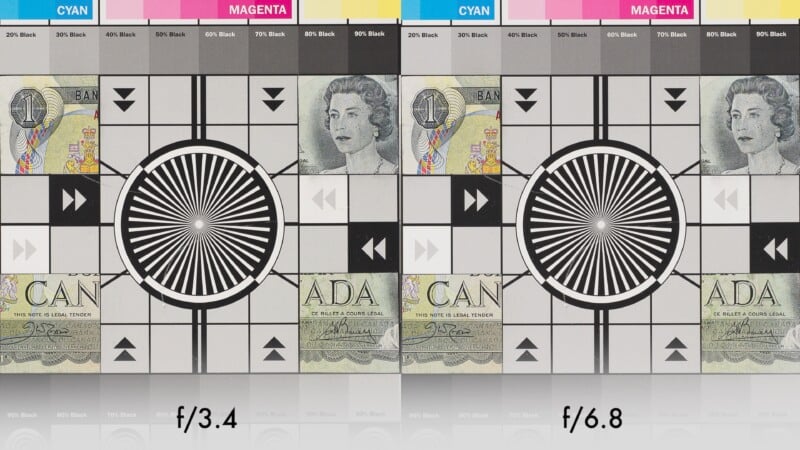
I would consider this optic to essentially be a “normal” lens, and these don’t usually have any sort of macro capability. The 75mm f/3.4 P continues this expectation as the minimum focusing distance is 0.55-meters from the sensor plane and only gives a reproduction ratio of 1:5.8. A macro lens this is not. The focusing speed was decent, though, and as mentioned earlier, the manual focusing was precise enough close up.


Hasselblad XCD 75mm f/3.4 P Review: Portable But Pleasing
I enjoyed my time with this little lens and the image quality is excellent as always. Small concessions have to be made comes to bokeh and vignetting in order to reach this lower price but the lens is still fun to use and very capable. Basically, you have to mostly just be okay with the somewhat lessened light gathering potential of this lens.
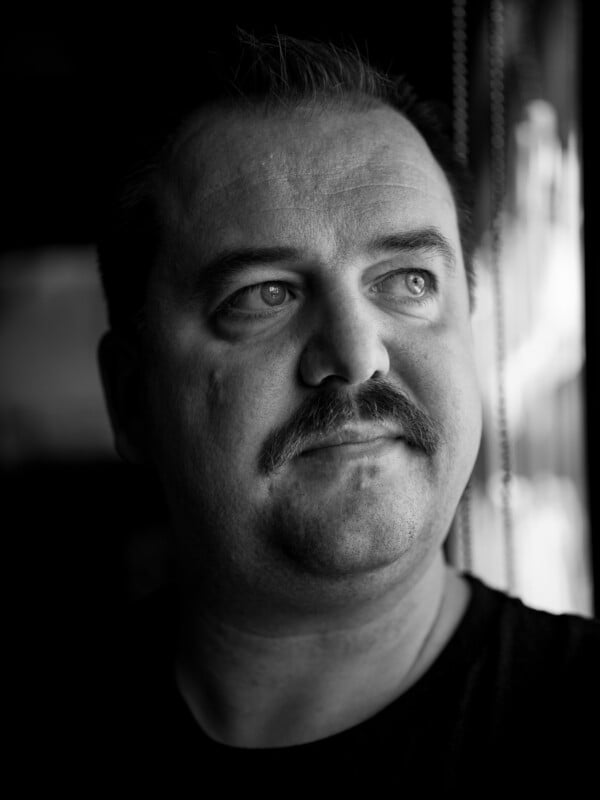

The closest competition in the Hasselblad lineup is the 65mm f/2.8 XCD lens which does have a slight aperture advantage. However, I think I prefer the slightly longer focal length and smaller size of the 75mm lens. The true star in this range is the 80mm f/1.9 which will deliver much shallower depth-of-field and is incredible optically, but the size and price go way up. You could also go the 90mm f/3.2 route which is more suited to dedicated portraiture and will still give softer backgrounds but will also involve a $1000 premium.
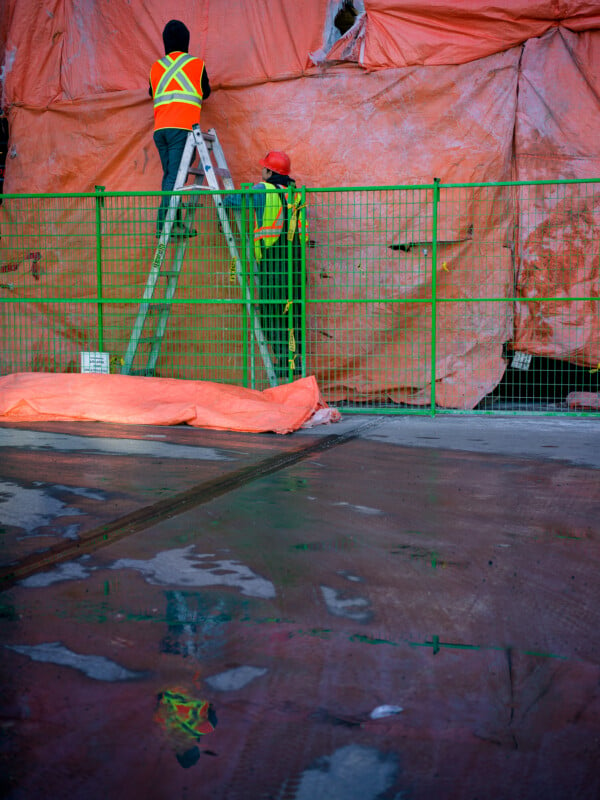

The 75mm P has to be appreciated as an alternative to the 65mm lens most of all and will win users over with its image quality and portability. As a handy walk-around lens which can also work for the occasional portrait, Hasselblad have made a good product. It’s still a pricey lens but I think most people will appreciate the results that this lens delivers and the slightly longer focal length compared to the 65mm lens, the lower price being an added bonus. If I already owned the 35-70mm f/3.4-4.5 zoom though, I would probably choose something with a faster aperture to really differentiate what photos I could capture.

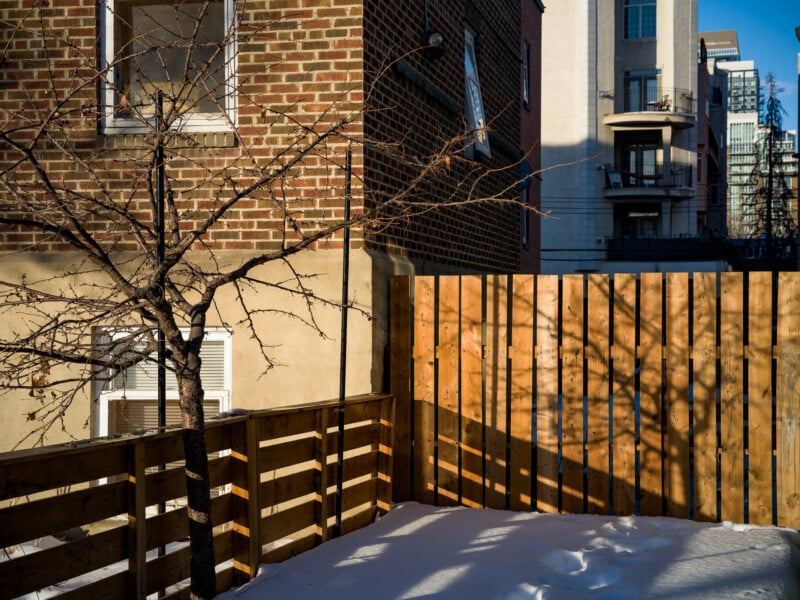
Are There Alternatives?
The Hasselblad 75mm f/3.4 P comes in at $2,300 which compares favorably to the 65mm f/2.8 at $2,750. You could go to the high-end 80mm f/1.9 at $4,845 for the shallowest depth of field possible. Hasselblad’s 90mm f/2.5 V is also an option but, frankly, covers a different range altogether.
Should You Buy It?
Yes. If I was looking for a normal lens for an X2D and have nothing at the moment, the 75mm f/3.4 P would make a lot of sense. It saves your wallet a bit of cash and has the optical performance to boot.